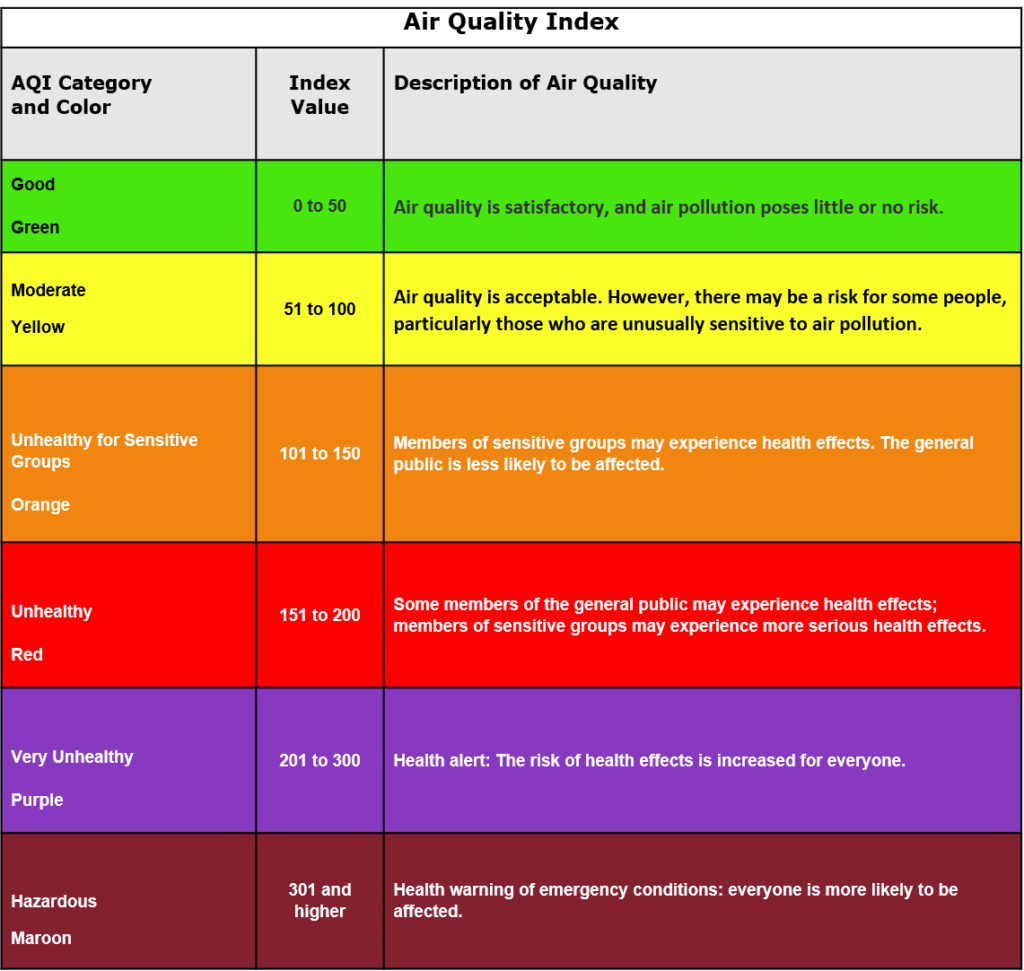What is Particulate Matter 2.5 (PM2.5)?
PM stands for particulate matter (also called particle pollution): the term for a mixture of solid particles and liquid droplets found in the air. Some particles, such as dust, dirt, soot, or smoke, are large or dark enough to be seen with the naked eye. Others are so small they can only be detected using an electron microscope.
Particle pollution includes:
PM2.5: fine inhalable particles, with diameters that are generally 2.5 micrometers and smaller.
PM10: inhalable particles, with diameters that are generally 10 micrometers and smaller; and
How small is 2.5 micrometers? Think about a single hair from your head. The average human hair is about 70 micrometers in diameter – making it 30 times larger than the largest fine particle.
See comparison below:

Sources of PM: These particles come in many sizes and shapes and can be made up of hundreds of different chemicals. Some are emitted directly from a source, such as construction sites, unpaved roads, fields, smokestacks or fires. Most particles form in the atmosphere as a result of complex reactions of chemicals such as sulfur dioxide and nitrogen oxides, which are pollutants emitted from power plants, industries and automobiles.
Health Effects and Environmental Effects of Particulate Matter (PM)
The size of particles is directly linked to their potential for causing health problems. Small particles less than 10 micrometers in diameter pose the greatest problems, because they can get deep into your lungs, and some may even get into your bloodstream. Exposure to such particles can affect both your lungs and your heart. Numerous scientific studies have linked particle pollution exposure to a variety of problems, including premature death in people with heart or lung disease, nonfatal heart attacks, irregular heartbeat, aggravated asthma, decreased lung function, increased respiratory symptoms, such as irritation of the airways, coughing or difficulty breathing.
Now, the Tribal EPA has 2 Purple Air sensors, which measure the PM (Particulate matter). You can click the link to see the Purple Air sensor at the tribal office & at the tribal apartments. Understanding Air Quality & Purple Air Empowers Community Science. We use these Purple Air sensors to understand air quality impacts through local air quality data.
Click here to see our Tribal Air.
Use this to determine the Air Quality Index:


